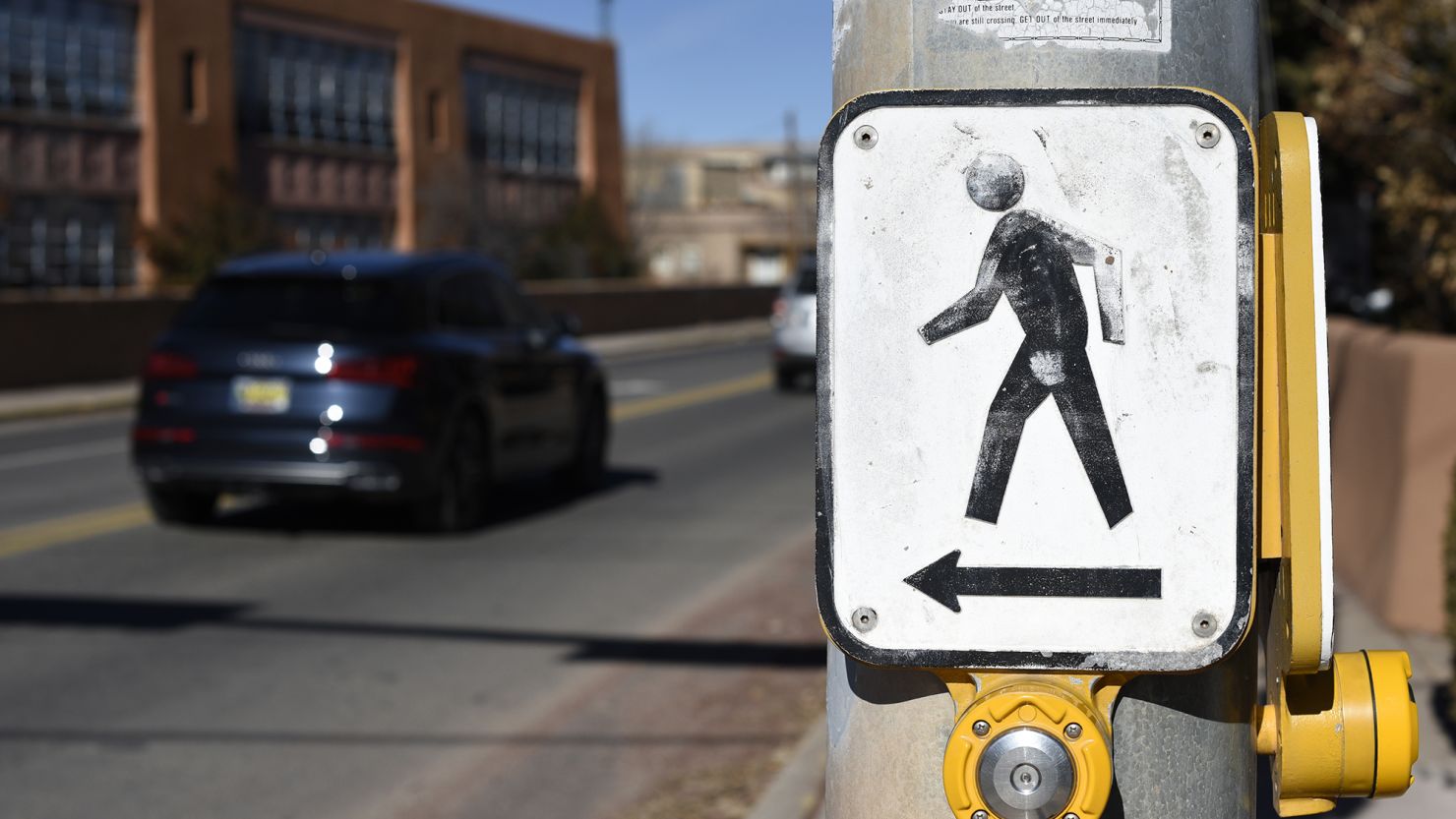US roads saw the largest increase on record in deaths per mile traveled in 2020, including a 26% increase in hit-and-run fatalities that outpaced the increase in overall deaths.
The National Highway Traffic Safety Administration released the data earlier this month.
Hit-and-run deaths have grown steadily in the last 15 years as a share of traffic deaths. Victims of hit-and-runs are also increasingly pedestrians and cyclists. In 2020, 69.6% of hit-and-run deaths were either pedestrians or cyclists, compared with 61.1% in 2006. Roughly one in four pedestrian deaths in 2020 was a hit-and-run.
“The [hit-and-run] statistics are bad. But it’s all part of the larger problem of pedestrian safety. That’s a crisis,” Julia Griswold, a traffic safety researcher focused on pedestrians and bicyclists at the University of California-Berkeley, told CNN Business.
Hitting a pedestrian isn’t always a crime but leaving the scene of a crash that causes an injury is.
Murky causes
Traffic safety experts say it’s not clear why we’ve seen the uptick in traffic deaths, including hit-and-runs, but the pandemic, speeding, impaired driving, and the nation’s car-focused transportation system may all be factors.
“Our roads are essentially like airport runways, strips of concrete that invite driving at breakneck speed,” Kavi Bhalla, a University of Chicago health professor who studies transportation systems, told CNN Business. Roads are narrower in the rest of the developed world, he said, which reduces driving speeds.
The US increase in 2020 makes it an outlier compared to other developed nations, which haven’t seen a similar uptick, according to Jake Nelson, AAA’s director of traffic safety advocacy and research.
AAA’s research, which relies on self-reported data, found that the safest drivers drove less in 2020 whereas higher-risk drivers were on the road more. But that shift doesn’t fully explain how much riskier roads became for everyone, AAA found.
“There’s something different about that small proportion of drivers who are now driving more that’s changing risk on the road overall,” Nelson said.
The increased dangers on US roads in 2020 did not disappear in 2021.
Early data shows that during the period of 2021 that overlaps with the onset of the pandemic in 2020, April through September, deaths per mile declined compared to the prior year. But overall traffic deaths per mile in the first nine months of 2021 increased marginally from 2020.
Robert Schneider, a University of Wisconsin-Milwaukee professor who researches sustainable transportation, told CNN Business that the spike in hit-and-run deaths and traffic deaths could be tied to the decline in public transportation services in 2020. At the start of the pandemic in 2020, ridership fell 79% compared to 2019 and 65% of transit agencies cut back service. Some agencies relied on emergency funding to avoid completely shutting down service.
Public transportation provides transport to people who should not be on the road, for example those who might be intoxicated or have suspended licenses, Schneider said. In cases in which an impaired driver opts to drive, “Transit would’ve been a safer mode for them and everybody else,” he said.
Alcohol and impaired driving fatalities grew 14% in 2020, outpacing the 7.2% increase in overall traffic deaths when compared with 2019.
Thinking from a system level
The US Department of Transportation released a National Roadway Safety Strategy in January, calling the status quo on American roads unacceptable and preventable.
The National Highway Traffic Safety Administration plans to propose changes to the new car assessment program that may emphasize safety features that protect people both inside and outside vehicles. In 2020, 34% of traffic deaths occurred outside vehicles, a rate that’s increased steadily since hitting a low of 20% in 1997.
The agency has also said it’ll develop rules for requiring automatic emergency braking for pedestrians on new passenger vehicles, but not heavy trucks.
The DOT’s plan features a “safe system” approach, which emphasizes the responsibility of all actors in a system, including roadway engineers. US road design has long prioritized moving vehicles at high speeds rather than protecting all road users.
“The engineer can’t design something and say, ‘I followed the book and therefore I don’t have any responsibility after this,’” Rebecca Sanders, the founder of Safe Streets Research & Consulting, told CNN Business.
Sanders and other traffic safety experts have called the approach promising. She also cautioned there’s a risk that the safe system approach becomes “another slogan” rather than meaningful change.
“Some folks have viewed ‘Vision Zero’ as ‘oh that’s another slogan,’” Sanders said. “Complete streets, Vision Zero, okay now we’re at safe systems.”





